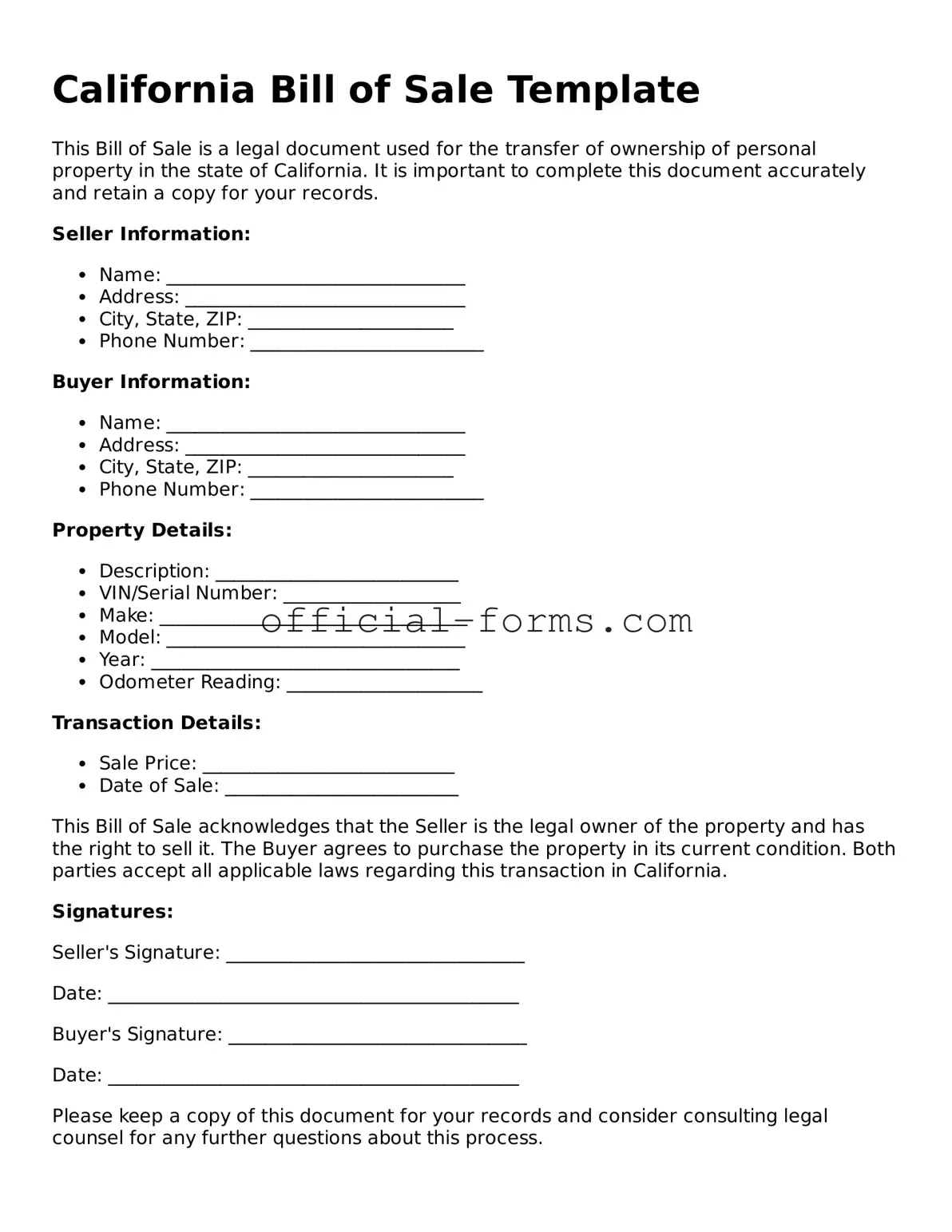When completing the California Bill of Sale form, individuals often encounter several common mistakes that can lead to complications later on. One frequent error is failing to include all necessary information. The form requires specific details about the buyer, seller, and the item being sold. Omitting any of this information can render the document incomplete, which may cause issues during the transfer of ownership.
Another mistake involves incorrect identification of the item being sold. Buyers and sellers should ensure that the description of the item is clear and accurate. This includes details such as the make, model, year, and Vehicle Identification Number (VIN) for vehicles. Inaccuracies can lead to disputes over ownership and may complicate future transactions.
Many people also overlook the importance of signatures. Both the buyer and seller must sign the Bill of Sale for it to be legally binding. Failing to obtain the necessary signatures can invalidate the document, leaving both parties without legal protection. It is essential to double-check that all required signatures are present before finalizing the form.
Additionally, some individuals forget to date the document. Including the date is crucial, as it establishes when the transaction took place. Without a date, it may be challenging to prove when the sale occurred, which could affect any claims related to warranties or disputes that arise later.
Another common error is not providing a proper method of payment. The Bill of Sale should clearly state how payment will be made, whether it’s cash, a check, or another form. This clarity protects both parties and helps avoid misunderstandings regarding payment terms.
Lastly, people sometimes fail to keep copies of the completed Bill of Sale. It is important for both the buyer and seller to retain a copy for their records. This document serves as proof of the transaction and can be vital in case of any future disputes or issues related to the sale.
